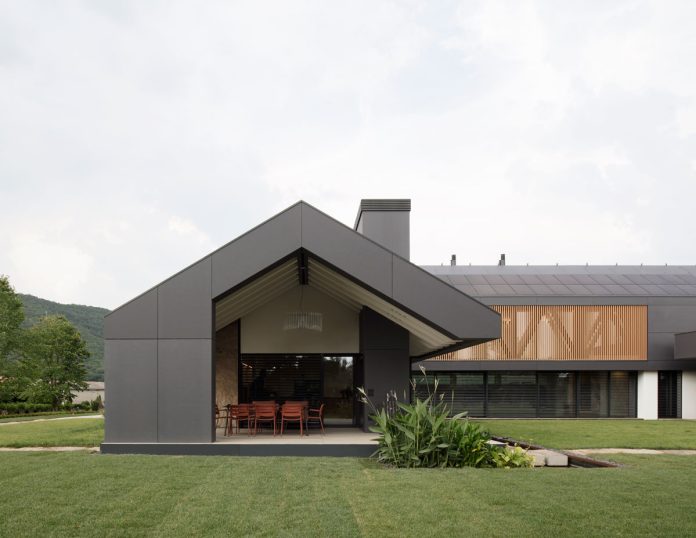Between the Berici and Euganean hills, not far from the Venetian lagoon, the architect Giorgio Parise has designed a zero-impact villa inside a park of 5000 square meters, using natural materials and sustainable energy solutions.
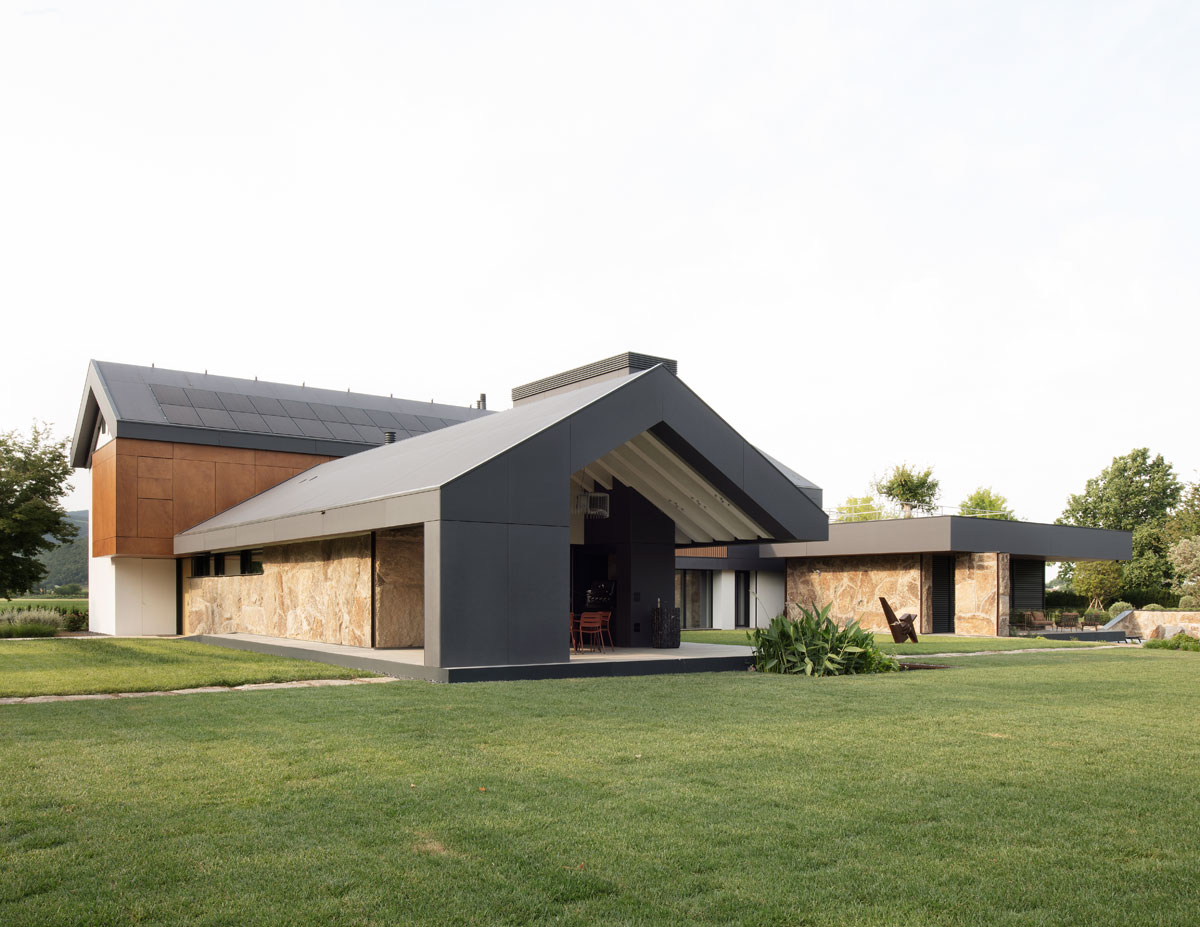
A synthesis of a rural house and a contemporary habitat model, with links to the typical construction features of the zone, including the L-shaped footprint, with an extra addition for an overall area of about 920 square meters. Another local reference is the use of trachyte, a stone often seen in the lower Vicenza region, with a warm color for walls cut by long horizontal openings. The stone has been applied in “scorsi,” using scraps from the cutting of quarried blocks, with irregular sizes.
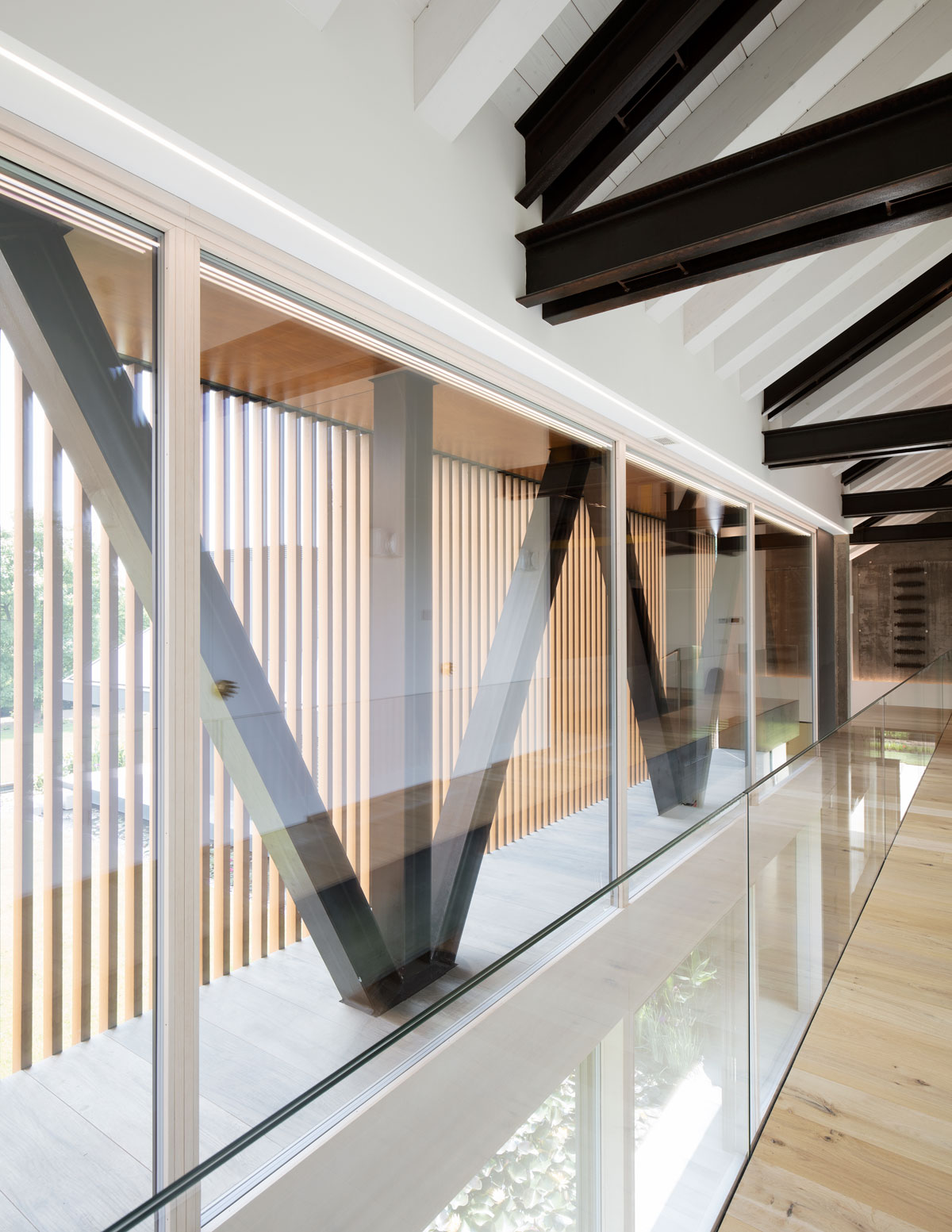
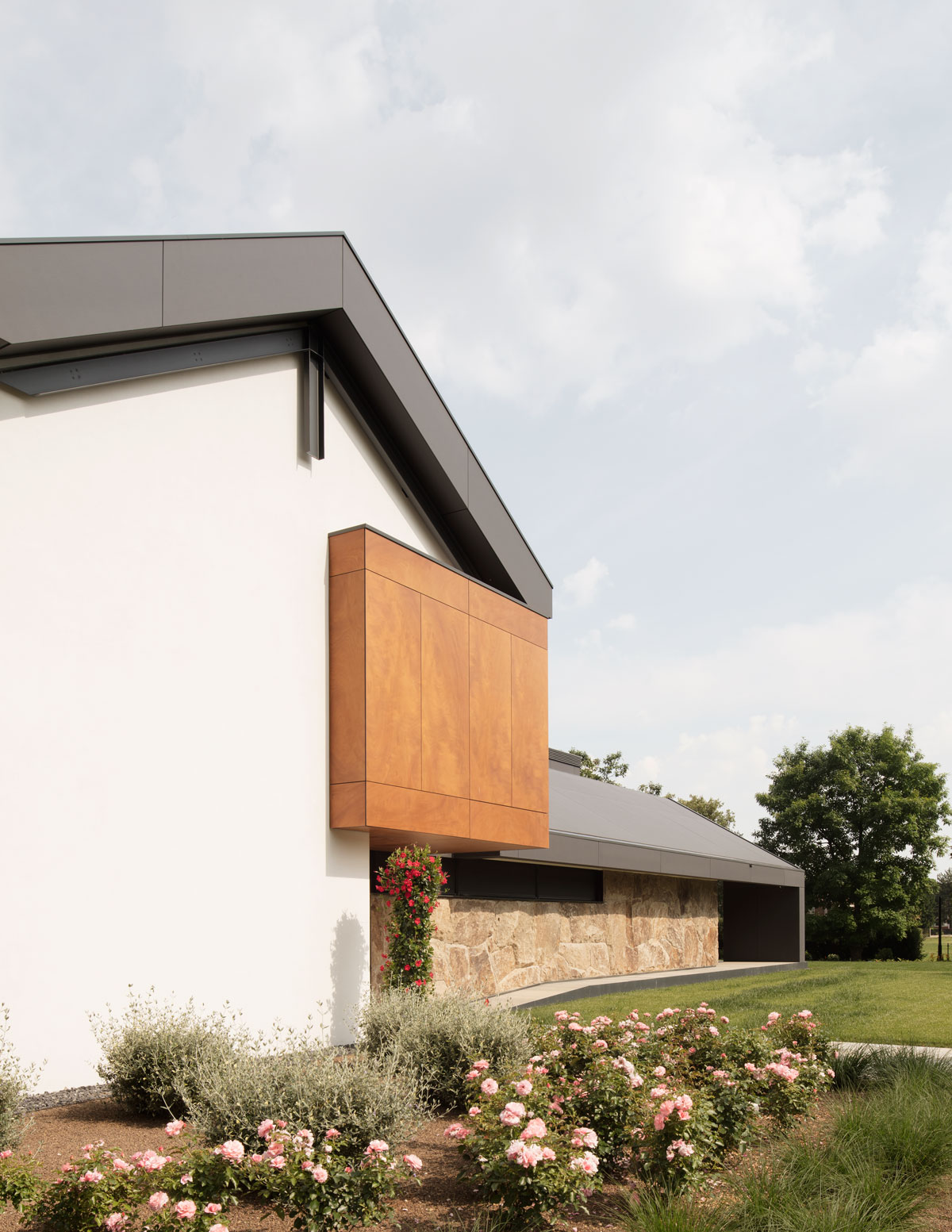
This rugged stone cladding is combined with other elements for vivid contrast, such as the large window frames, also featuring sunscreens, along with portions in wood and XXL slabs of Lapitec, a full-bodied material that is extremely strong and durable, made with a blend of natural minerals – in this case, in the Nero Antracite color and the Vesuvio finish. The material has been applied to a number of vertical surfaces, the pitched roof and the interiors.
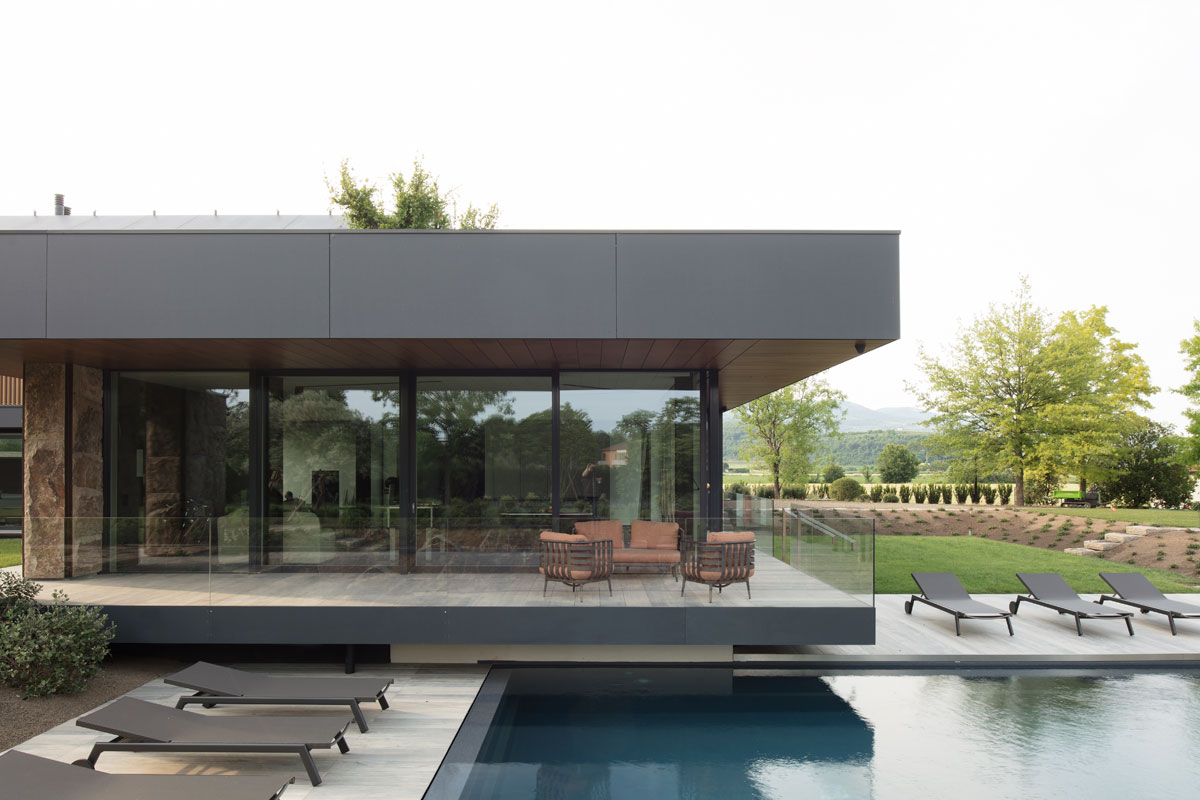
Along the façades of the villa, one encounters various natural materials, such as wood, trachyte and Lapitec, the latter in slabs larger than three meters, for the roof and the ventilated façade. The Keil attachment technology for the Lapitec slabs permits invisible installation using the openings behind the panels of sintered stone, which is easy to work with and identical at every point due to its full-bodied composition. The Lapitec surface is free of pores and thus non-absorbent. It stands up to changing weather conditions and chemical agents, while ensuring optimal conditions of humidity and temperature in summer or winter. Lapitec can be recycled at the end of its life span; it contains a very low percentage of crystalline silica, and has potentially eternal durability.
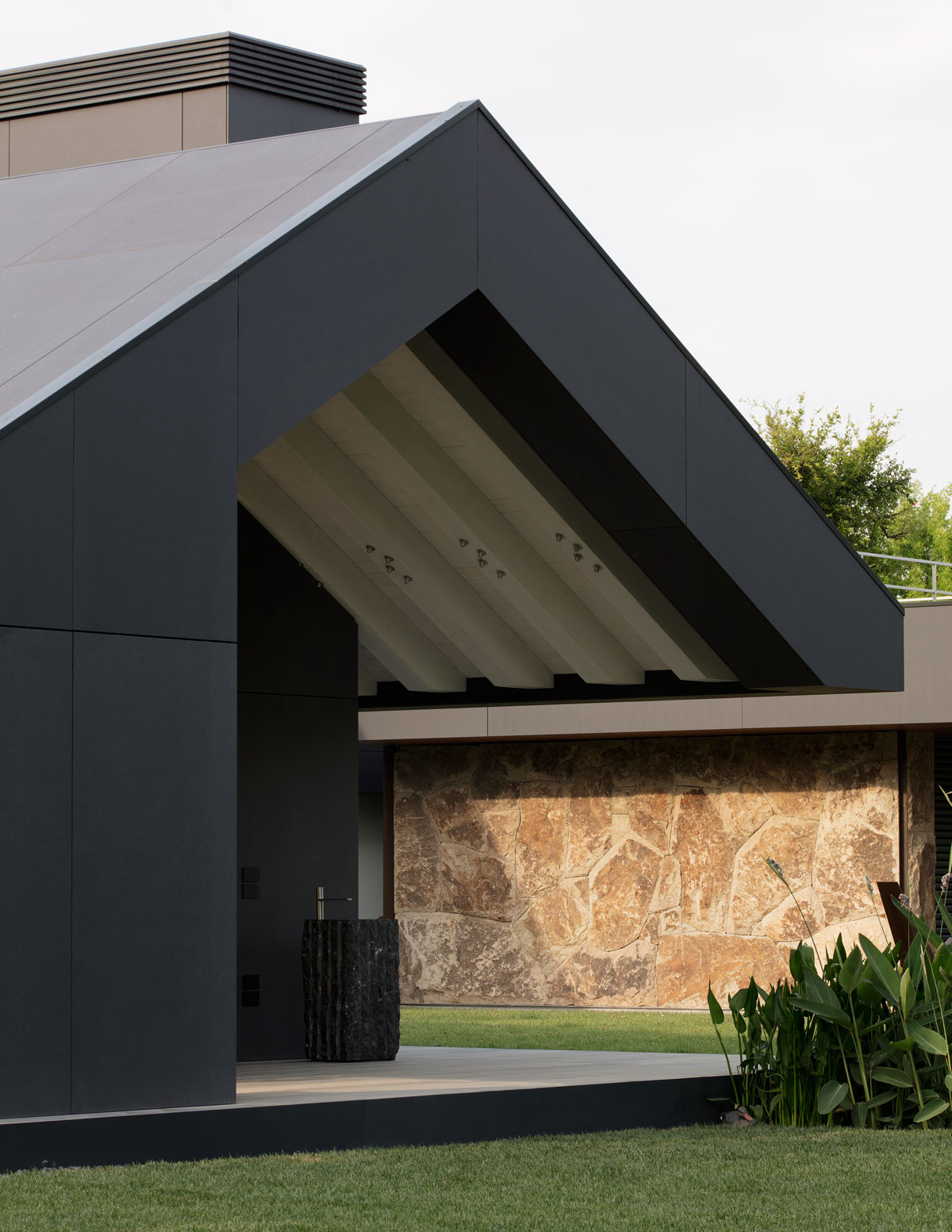
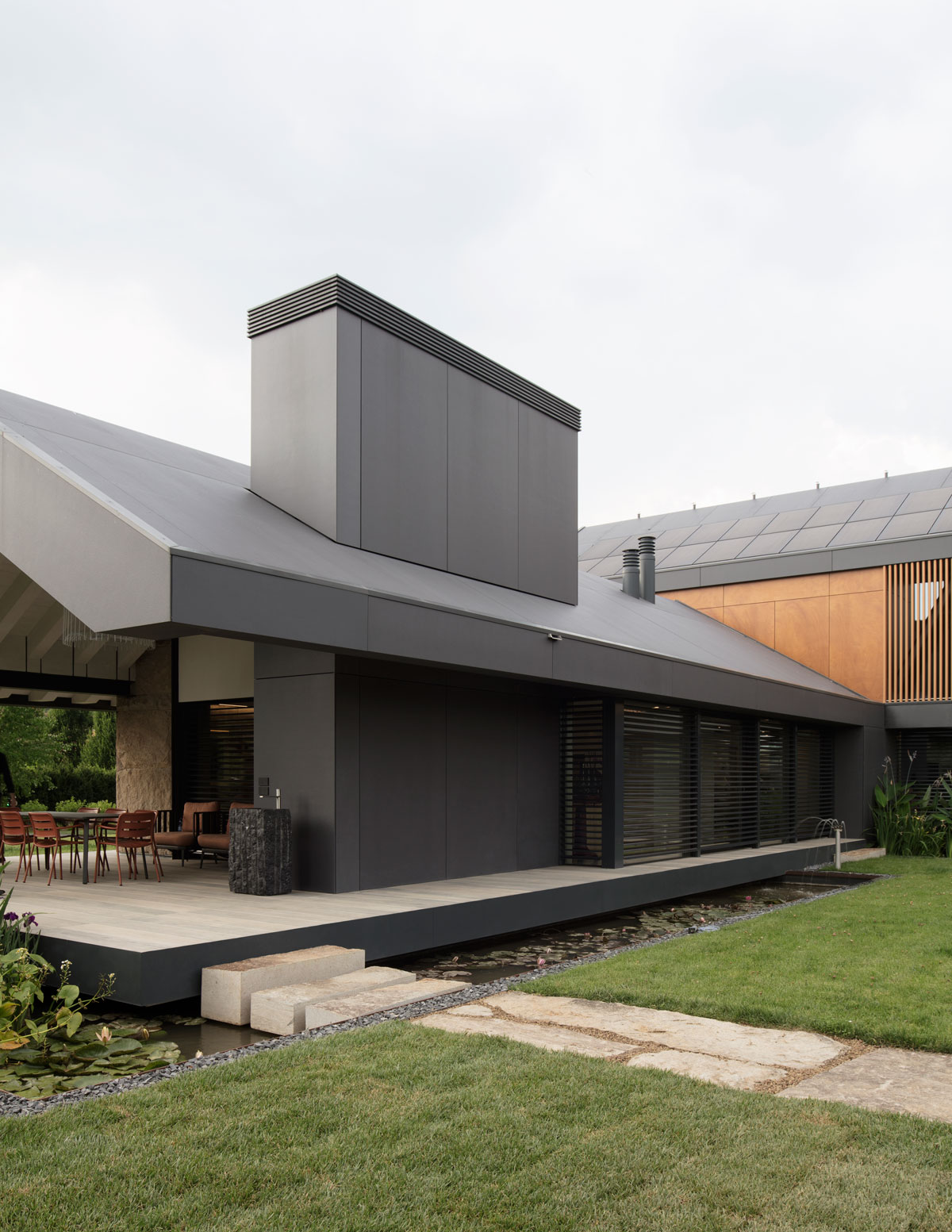
Reduction of environmental impact was one of the most important parameters in the concept developed by the architect Giorgio Parise, who has combined the choice of materials with the use of technologies that make the house self-sufficient in terms of energy: the roof pitches in sintered stone, with a slope of 30 degrees, have been equipped with photovoltaic panels to drive the heat pumps, which together with geothermal technology contribute to the house’s zero-emission certification, enhanced by a home automation system that controls the individual zones to save energy, providing wellbeing and comfort for the owners.
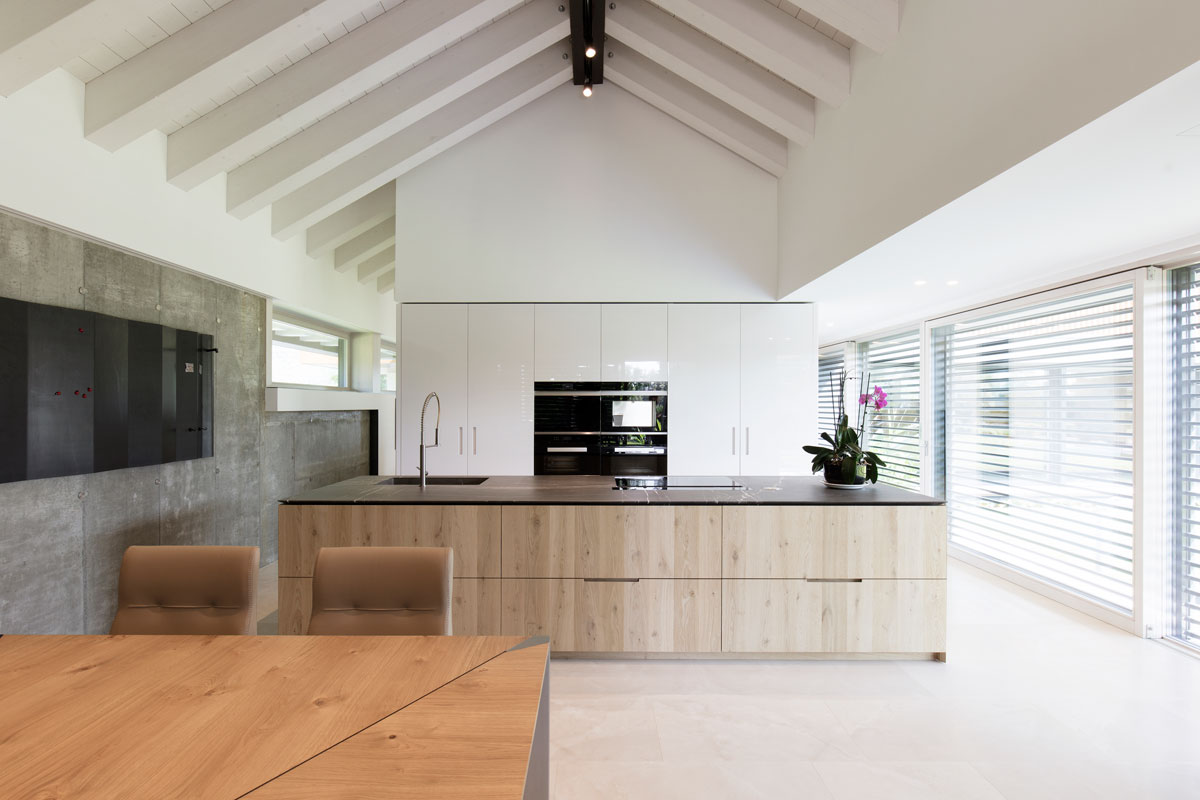
A sustainable villa, featuring some dreamy areas like the master bedroom with direct access to the green roof, and the spa facing an outdoor pool, containing a sauna, a Turkish bath, a hydromassage tub and an emotional shower, with full-height glazing to live in symbiosis with nature.
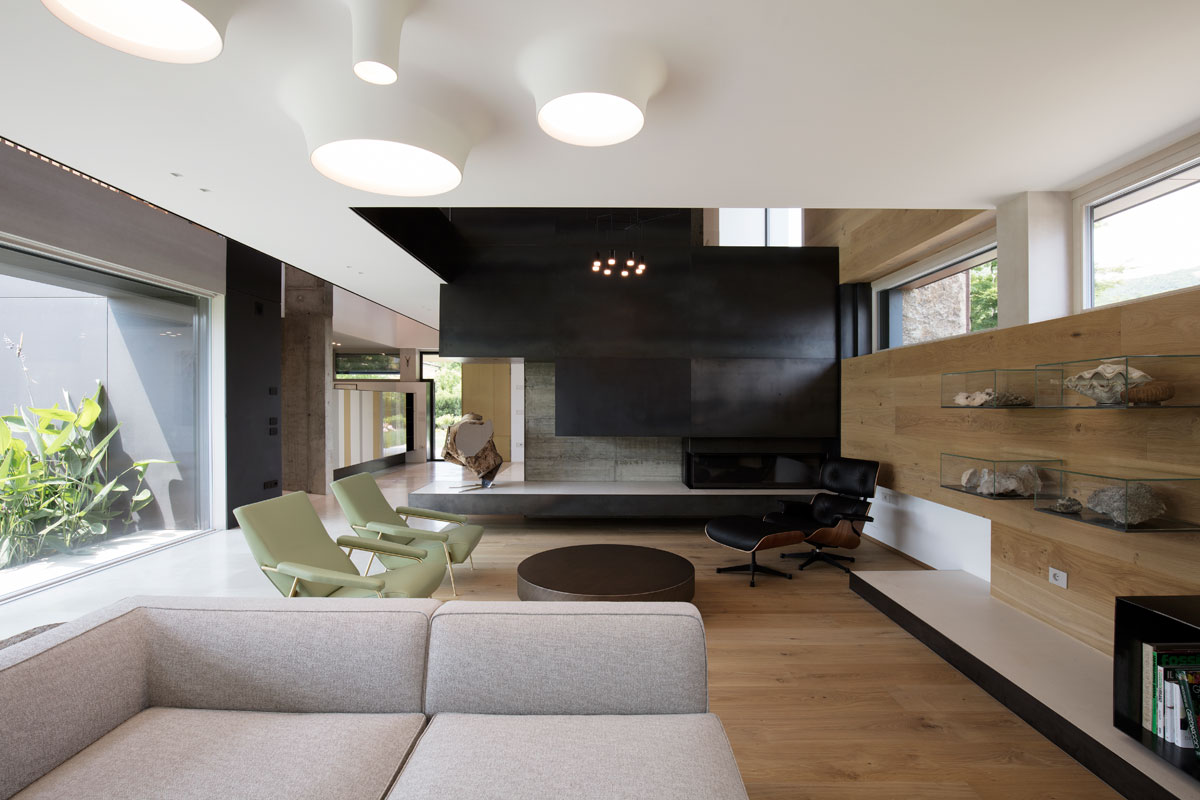
Photo © Alberto Sinigaglia

